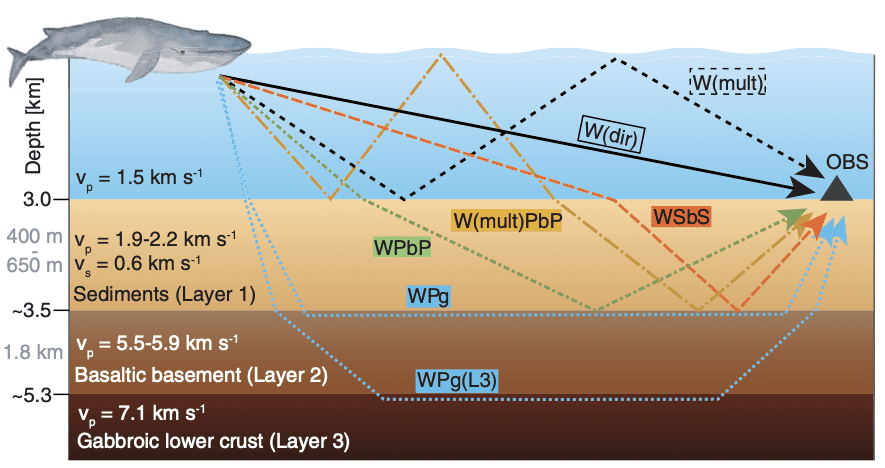An innovative study suggests that songs of fin whales can be used for seismic studies of the oceanic subsurface. This could essentially open up a new avenue for geologic research and even reduce the need for seismic studies in the ocean, which is disturbing and even harmful to whales.

Earthquakes are some of nature’s most devastating processes, but in some ways, they can also be useful. Most of what we know about the Earth’s internal structure comes from earthquakes: researchers can analyze vibrations caused by seismic waves and draw conclusions about the Earth’s subsurface — from the near-surface crust to the depths of the mantle and the core.
But seismic waves are essentially just acoustic waves — they don’t need to be tectonic in nature. So researchers had a quirky idea: what if we could use the whales’ deep vocalizations as a ‘seismic’ source. John Nabelek, a professor at Oregon State University’s College of Earth, Ocean, and Atmospheric Sciences and a co-author of the paper explains:
“People in the past have used whale calls to track whales and study whale behavior. We thought maybe we can study the Earth using those calls,” Nabelek said. “What we discovered is that whale calls may serve as a complement to traditional passive seismic research methods.”
The study started as a bit of a chance occurrence. The study’s lead author is Vaclav M. Kuna, who worked on the project as a doctoral student at Oregon State and has since completed his Ph.D. Kuna and Nabelek were studying earthquakes from a network of 54 ocean-bottom seismometers about 1-200 miles from the coast of Oregon when they observed a strange signal. The signal turned out to correlate with whales’ presence in the area.
“After each whale call, if you look closely at the seismometer data, there is a response from the Earth,” Nabelek said.
Fin whales don’t actually “sing” — their calls are more like a series of clicks that go on for hours, two times louder than the loudest concert you’ve ever seen (although sound transmits differently in water). Turns out, the frequency of these clicks are within the range that can be picked up by seismographs. This is what researchers were picking up, so they figured that they could actually use these calls as signals for seismic studies.
It’s a complicated process. The sounds bounce between the surface of the water and the bottom of the ocean, with some of the waves’ energy going through the oceanic crust. Reconstructing this signal is a big challenge, but it can be done; this proof-of-concept study shows it. It’s not clear just how much information can be derived this way, but it could at least be a complement to more conventional seismic surveys.
The approach could also end up helping whales, as conventional seismic surveys can disturb whales.
Journal Reference: Václav M. Kuna et al, Seismic crustal imaging using fin whale songs, Science (2021). DOI: 10.1126/science.abf3962









